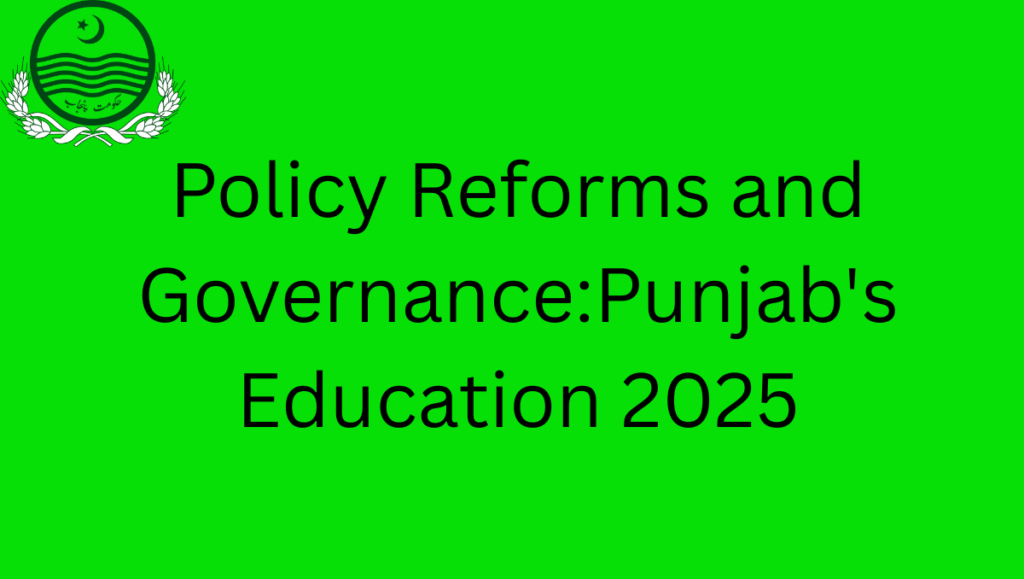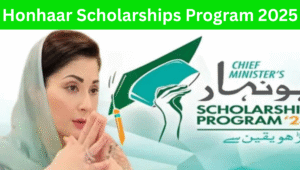Punjab’s Education 2025,Punjab, Pakistan’s most populous province, has embarked on an ambitious journey to overhaul its educational landscape. Under the leadership of Chief Minister Maryam Nawaz Sharif, the provincial government has introduced a series of reforms aimed at enhancing access, quality, and equity in education. This analysis delves into the multifaceted initiatives undertaken, the challenges addressed, and the collaborative efforts shaping the future of education in Punjab.
Also Read: Education in Pakistan

Policy Reforms and Governance:Punjab’s Education
🔗 The Punjab government merged PCTB, QAED, and PEC to form PECTAA.
This structural reform brings curriculum, training, and assessments under one authority.
📘 PECTAA aims to unify curriculum development, teacher training, and student assessment.
A cohesive approach to improve education quality and standards.
🚨 The federal government declared an “Education Emergency.”
A nationwide call to urgently address educational challenges.
💰 Education budget will increase from 1.7% to 4% of GDP.
Significant funding boost to strengthen the education system.
👩🏫 The initiative targets reducing out-of-school children, hiring more teachers, and promoting STEAM education.
| Topic | Details |
|---|---|
| 🏗️ School Construction and Rehabilitation | The provincial government is prioritizing school construction and rehabilitation, especially in underserved areas. |
| 🚧 Eliminating Barriers to Education | The goal is to remove obstacles caused by poor infrastructure, ensuring every child has access to a functional learning environment. |
| 🎓 Enrollment Campaign | A campaign has been launched to enroll two million students in public schools, focusing on increasing school attendance in underserved areas. |
| 📚 Reducing Out-of-School Children and Improving Literacy | The campaign aims to reduce the number of out-of-school children and improve literacy rates, targeting both enrollment and educational outcomes. |
Also Read: Pakistan Schools Will Reopen on May 12, 2025
Teacher Training and Recruitment About Punjab’s Education
👨🏫 The government has initiated capacity-building programs for educators.
Programs focus on modern teaching techniques and professional growth Punjab’s Education.
📈 These programs emphasize continuous professional development for teachers.
Ongoing training to improve teaching quality.
🧑💼 A recruitment plan has been implemented to address staff shortages.
Ensuring enough teachers are available for schools with vacancies Punjab’s Education.
📍 The recruitment focuses on optimal teacher deployment, especially in schools with existing vacancies.
Targeted efforts to fill teaching positions where needed most.
| Topic | Details |
|---|---|
| 🎓 Honhaar Undergraduate Scholarship Programme | The Punjab government launched the largest scholarship initiative in Pakistan’s history. |
| 💰 Investment in the Program | Over Rs7 billion invested in the inaugural year of the scholarship program. |
| 🎯 Annual Scholarships Offered | 30,000 scholarships offered annually. |
| 📚 Coverage of Scholarships | Scholarships cover tuition fees across 68 disciplines in both public and private institutions. |
Also Read: Free Transport and Scholarship Program 2025 Apply Now
Collaboration with Malala Fund About Punjab’s Education
💬 The Malala Fund has welcomed Pakistan’s new education plan.
Supporting the government’s focus on reforming education policies Punjab’s Education.
💰 Emphasis is placed on increasing budget allocations and policy reforms to address the national education crisis.
Aiming to tackle education challenges across the country.
💵 The Fund has invested over $12 million in local initiatives.
Funding various educational projects to improve the sector.
👧 Focus areas include girls’ education, digital inclusion, and infrastructure development.
Working towards inclusive and accessible education for all.
Challenges and Criticisms About Punjab’s Education
- 🏫 Outsourcing of Non-Performing Schools
- 🤔 Concerns About Accountability
- 🌍 Ensuring Equity
Future Outlook
🚀 Transformative Phase in Education
The reforms introduced by the Punjab government signify a new era for the province’s educational sector.
💡 Continued Investment
Ongoing financial commitment will be essential for sustaining educational progress.
🤝 Stakeholder Collaboration
Collaboration with various stakeholders will play a crucial role in achieving success.
📜 Adaptive Policy-Making
Flexibility in policy development will be key to responding to emerging educational needs.
Also Read:CM Punjab Free E-Bike Registration 2025 for Students – Apply Now for Free E-Bikes in Punjab
| Topic | Details |
|---|---|
| 🔬 Introduction to STEAM | Focus on integrating Science, Technology, Engineering, Arts, and Mathematics in the education system. Recognizing creativity and innovation alongside STEM subjects. |
| 📚 STEAM-based Learning Modules | The Punjab government is piloting STEAM-based learning modules in selected schools with plans to scale them across the province. |
| 🤖 Introduction of Coding and Robotics | Coding and robotics will be introduced at middle and secondary school levels to enhance technical skills. |
| 💻 Establishment of Digital Labs | Digital labs with interactive learning tools will be set up to enhance hands-on learning and digital literacy. |
| 👩🏫 Teacher Training Programs | Teacher training programs will focus on STEAM pedagogy, equipping educators to effectively teach these subjects. |
| 📝 Project-Based Assessments | Project-based assessments will replace rote memorization, encouraging critical thinking and real-world problem-solving skills. |
| 🌍 Preparing Students for 21st Century Careers | This initiative aims to prepare students for careers in tech-driven sectors, addressing the gap in global advancements, particularly in Pakistan. |
Conclusion
Punjab’s educational reforms reflect a holistic approach to addressing systemic challenges. By integrating policy changes, infrastructural development, and stakeholder engagement, the province is setting a precedent for educational transformation in Pakistan. The success of these initiatives will depend on sustained commitment, transparent implementation, and inclusive strategies that prioritize the needs of all learners.




